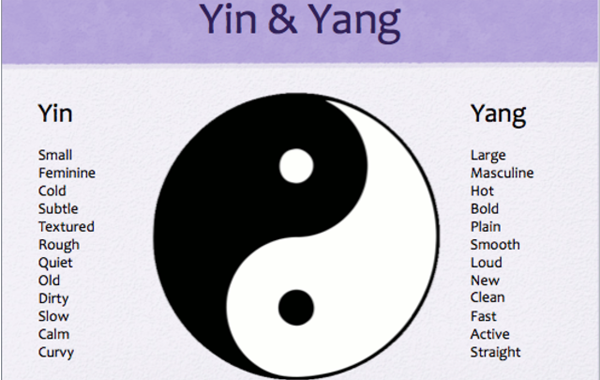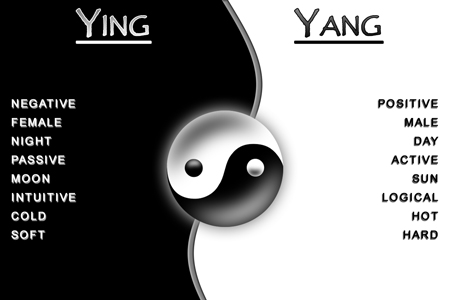Yin & Yang Meaning & Symbol
Yin and Yang are the female and male principles of ancient Sino-Vietnamese cosmogony. According to various philosophical schools, the universe was born from a vital force (khí, Chinese qi) or first principle (thái cực, Chinese taiji). Yin (âm) and yang (dương) are the two latent original aspects of this principle; hence they are referred to as the two models (lưỡng nghi). They give rise to the four figures (tứ tượng), which are transformed into eight trigrams (bát quái); their continuous mutation created the whole universe (see Book of Changes).

The Differences between Yin & Yang with Examples
Yin and yang are essentially opposites, but they are contained in each other. All things in creation thus inevitably contain the two principles, but an object is said to belong to yin if the female principle is predominant, or to yang in the opposite case. Some oppositional pairs in accordance with the yin-yang distinction include the following:
| Yin | Yang |
| Female | Male |
| Earth | Sky |
| Moon | Sun |
| Night | Day |
| Rain | Wind |
| Water | Fire |
| Exterior | Interior |
| Right | Left |
| Even | Odd |
| North | South |
| Northern slopes of a mountain | Southern slopes of a mountain |
| Southern banks of a river (since a city there faces north) | Northern banks of a river |
| Subject | Sovereign |
| Wife | Husband |
| Child | Parent |
| Commoners | Nobility |
| Cold | Hot |
| Stomach | Back |
| Inhibition | Excitement |
| Appearance | Reality |
| Blood | Breath |
| Cold | Heat |



